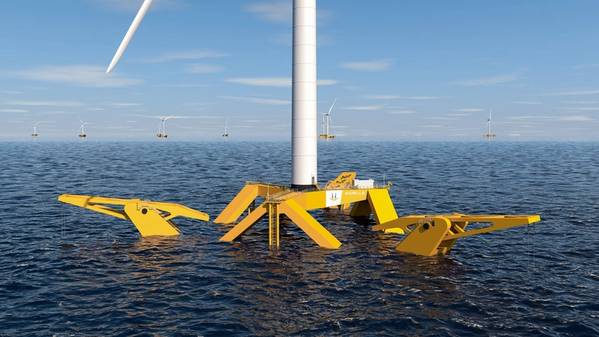
Gazelle Wind Power, a Dublin-based developer of foundations for floating offshore wind farms, is unveiling third-generation technology this week at a wind industry event in Denmark.
The company said its enhanced design "further refines Gazelle’s solution to address the primary challenges facing the offshore wind industry—such as cost, supply chain bottlenecks, and sustainability—by providing a lightweight, cheaper design that minimizes the impact on fragile marine environments while using existing port infrastructure."
Gazelle said that the new platform delivers enhanced mooring innovation that enables serial production.
"The platform makes first-generation technology—which was primarily designed to float and survive harsh ocean conditions—obsolete and improves on second-generation designs that are focused on industrialization," Gazelle said.
Instead, Gazelle explained, the platform moves away from archaic models that are stationary, heavy, bulky, and difficult to assemble and transport while reducing costs by 30% compared to conventional semi-submersible designs. Part of this improvement comes from the reduction in steel versus traditional offshore platforms.
For example, Gazelle said, a one-gigawatt offshore wind farm using Gazelle’s solution would save 71 kt of steel and reduce emissions of approximately 100 kt of carbon dioxide.
"The company’s platform can be quickly and simply installed at project sites because it requires no specialist cranes or vessels thanks to a cost-effective, innovative design using globally available components and a modular assembly process," Gazelle said.
Gazelle CTO Jason Wormald said: "On top of lowering costs and taking advantage of pre-existing infrastructure, every aspect of Gazelle’s floating offshore wind platform is designed to minimize environmental impact by using less steel and materials that protect the biodiversity of marine ecosystems, eliminating seabed scouring, and reducing installation impact.
"The platform’s unique geometry provides reduced draft in port, which means it floats higher in the water enabling the use of shallow ports with high stability in towing and wet storage. Pivoting arms allow the platform to move with the wind, waves, and tides that result in lower forces, enabling a lighter—and therefore cheaper—structure," Gazelle explained.
The company further said that the Gazelle platform utilizes "an innovative, dynamic mooring system representing a paradigm shift from an active ballast to a natural, passive system that balances forces and motions through a counterweight, keeping the turbine pitch low and improving operational efficiency."
"Vertical mooring lines attached to the pivoting arms reduce the platform’s environmental footprint by minimizing impact and allowing for a 75% reduction in mooring length when compared to semi-submersibles with catenary mooring in depths of 100 meters or more," the company said.
“Through industrial innovation, the platform components can be adjusted to accommodate all forecasted offshore wind turbine sizes, including the current 15MW or greater capacities,” said Wormald. “Additionally, our platform can be produced anywhere in the world, supporting job creation through regionalized manufacturing.”